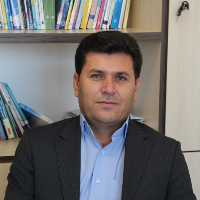Success Factors in Research Activities Based on the Experiences of Top Researchers
Given the significance of universities, their rankings, research outputs, and the impact of leading researchers in the field, the research aims to address the following questions: 1. What factors do top researchers adhere to in order to achieve success in their endeavors? 2. What factors will the university follow, based on the experiences of top researchers, to ensure success in their research activities? 3. How can students be effective in their research activities based on the experiences of top researchers?
The current research is of an applied nature and utilizes the qualitative content analysis method. The research community included all the working and retired faculty members of Isfahan University. A total of 40 individuals (5 women and 35 men) were selected using purposeful and snowball sampling. Based on data from the SciVal database, the top 10 researchers at the university were identified in terms of the number of international outputs (ranging from 243 to 87) and citations (ranging from 3690 to 1037). These researchers come from various fields. Additionally, using the Research Specialists database, other top researchers at the university were identified through interviews conducted using the snowball method. These researchers were selected based on their quality research, social impact, effective scientific communication, fundraising abilities, collaboration with other institutions and organizations, engagement with the industry, mentorship of selected students, and effective management and entrepreneurship in the field of research. The interview was terminated when the data reached saturation and repetition, and no new points were extracted from the content of the subsequent interviews. A semi-structured face-to-face interview was conducted to gather the opinions of the participants in the research. The findings were analyzed in three stages: open coding (extraction of sub-components), central coding (formation of components), and selective coding (selection of concepts) using MAXQDA 2020 qualitative data analysis software.
The items mentioned by the participants in the interviews as factors influencing success in research activities can be categorized into three concepts based on their frequency and importance: factors related to faculty members (265 codes), university-related factors (244 codes), and factors related to students (12 codes). Each concept includes various components. The factors related to faculty members include students, individual characteristics and motivation, scientific communication, research orientation and purpose, research area, industry and society relationships, skills, research outputs, adherence to professional ethics, and thesis. The components related to the university factor include communication with industry and society, research policies, promotion regulations and policies, policies and programs, students, facilities and infrastructure, skill development, support and respect for faculty members, internationalization, financial issues, management, recruitment, research groups, administrative issues, and mission orientation. Skills and determination are also considered essential components of a student.
In order to promote research activities at both the individual and organizational levels, it is necessary to address them from various dimensions and provide comprehensive conditions. On the other hand, the university is considered a fundamental institution for this purpose, due to the expertise and knowledge of its faculty members and students. On the other hand, the activities of faculty members and students depend on the university platform. Despite the influence of the context and environmental conditions of each university in the planning process, the individual and organizational factors mentioned can be generalized to other individuals and universities facing similar conditions. These factors can also be adjusted to fit the specific context of each university. On the other hand, there are upstream factors that are policy-based and implemented at the macro level, which can be utilized and adapted to various academic institutions.
-
The Role of Ontology and Knowledge Graph in Text Document Classification: A Review of Studies
Saiede Khalilian, Mitra Pashootanizade *, , Hamidreza Baradaran Kashani
Librarianship and Informaion Organization Studies, -
Harms and Solutions for Evaluating Humanities Research Outputs: A Case Study of Language and Literature
, *, Mitra Pashootanizadeh, Sayyed AliAsghar Mirbagherifard, Ahmad Shabani
Scientometric research journal, -
Evaluation policies and criteria of humanities scientific outputs from experts' point of view: a case study of language and literature fields
, *, Mitra Pashootanizadeh, AliAsghar Mirbagheri Fard, Ahmad Shabani
Journal of Information Processing and Management,



